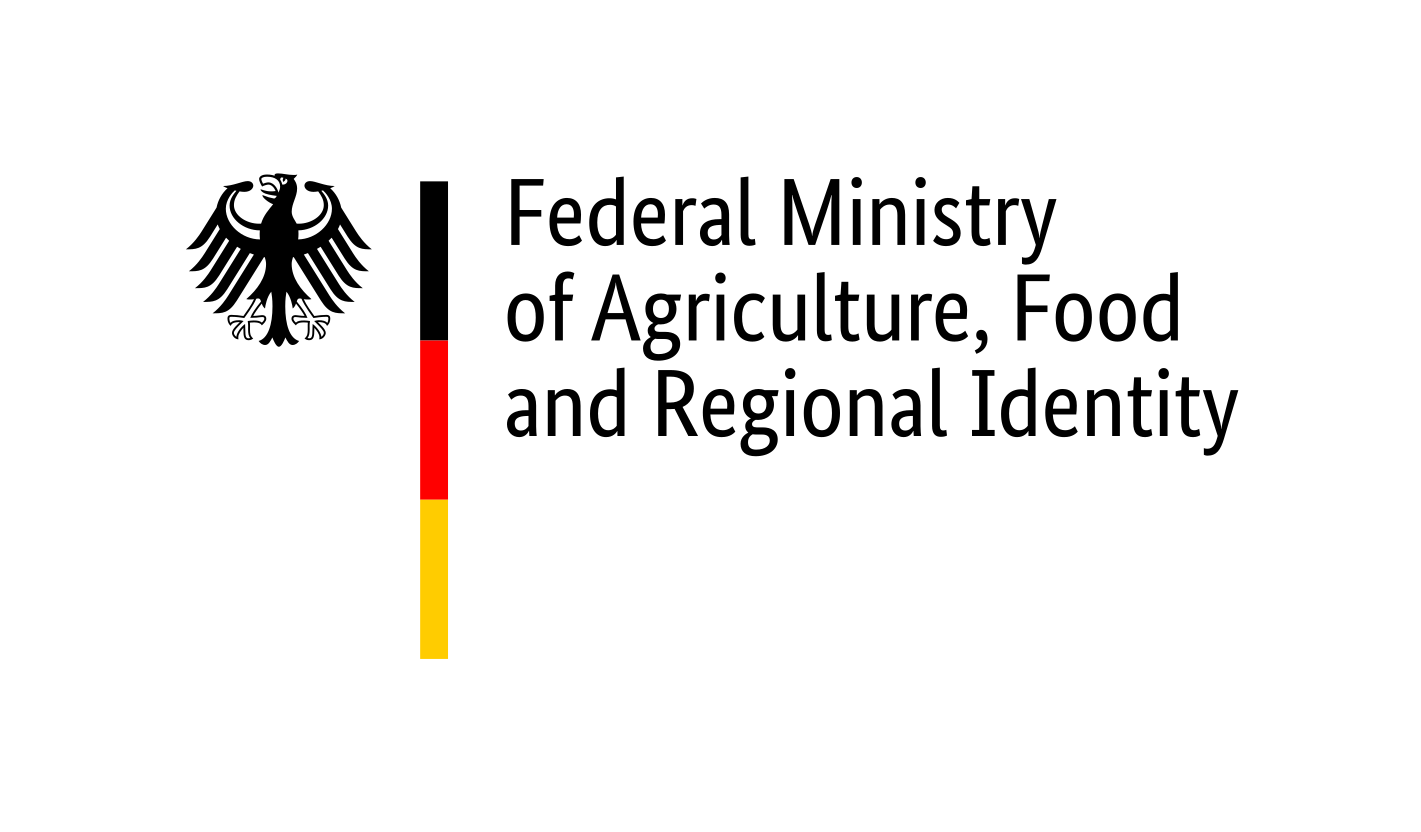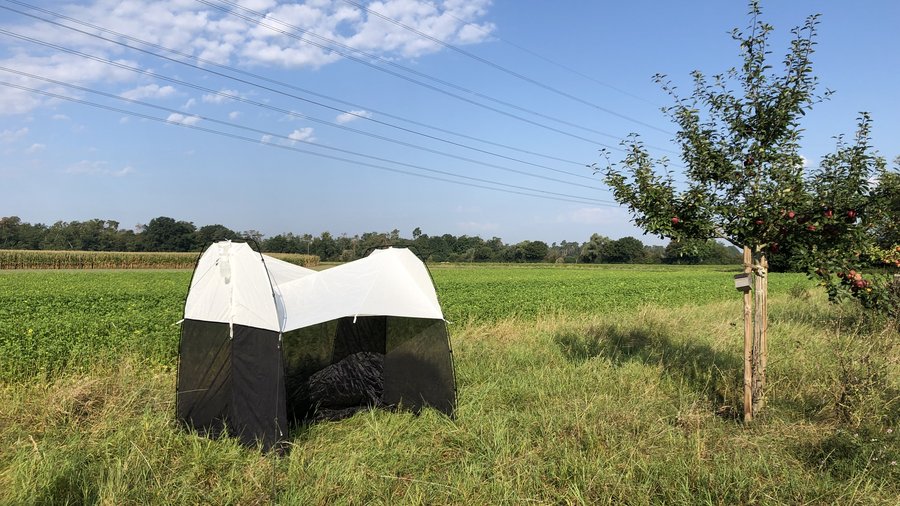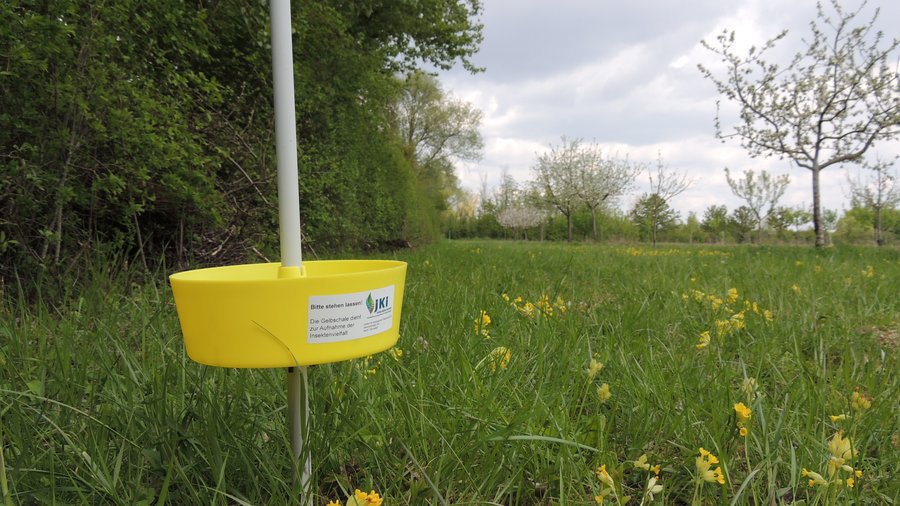

Hoverflies, predatory bugs, and parasitic wasps are among the most important antagonists of many pest species and thus perform an essential function in ecological food webs. The occurrence and diversity of these beneficial insects are therefore important indicators of the ecosystem service natural pest control in agricultural landscapes. In addition, their association with numerous host and prey species means that their occurrence can also be used as an indicator of overall insect diversity.
The systematic monitoring of these beneficial insects aims to provide a database on long-term population changes while also considering changes in land use and climate. The suitability of several monitoring methods for a long-term monitoring is currently being tested in refuge habitats (meadow orchards, permanent grasslands) in south-western Germany. These include Malaise traps and pan traps, which mainly catch flying insects and pollinators. In addition to the species-level identification of all caught hoverflies, size measurements of specific hoverfly species are used to estimate their fitness and their capability to provide relevant ecosystem services.



In the long term, insect diversity will be recorded by additionally using non-invasive methods (eDNA, camera trap).
Molecular methods, such as the analysis of eDNA, can be used to detect the presence of beneficial insects with less required effort and without the need to kill them. This works by analysing DNA fragments left behind by an insect e.g. on a flower, which are then examined to identify the respective species.
Another non-invasive tool is a newly developed AI-based camera trap for continuous automated monitoring of flower-visiting insects (https://maxsitt.github.io/insect-detect-docs/). For this purpose, insects are visually attracted by a platform with artificial flowers. When an insect lands on the platform, it is automatically detected by a specifically trained detection model. The cropped images of the detected insects are then used for automated identification with a separately trained classification model. The automatically post-processed data output provides reliable estimates on insect abundance and diversity with a high temporal resolution.
In a separate Citizen Science approach, citizen scientists (e.g. farmers, students, interested citizens) are actively involved in data collection.
Here, the occurrence of certain conspicuous beneficial insects (e.g. hoverflies, ladybugs) on specific plants at the edge of fields, in crops or on allotments at certain times of the year is surveyed. For the flower observations, artificial flowers are currently being developed, which will make it possible to conduct a standardized survey of flower-visiting insects (especially hoverflies) on each test plot to compare different locations, regions and agricultural land use types. Other survey methods are used as well, such as the application of cardboard strips around tree trunks to assess the abundance of codling moths and their parasitoids. This reveals both pest pressure and the presence of potential beneficial antagonists. The goal of this approach is to build a public information network and to develop a web module for data collection including data assessment routines. The website nützLINK (https://nuetzlink.julius-kuehn.de) went online in the 2nd quarter of 2022 and acts as a platform to share information and as a means of communication with citizen scientists.
The abundance and diversity of parasitoid Hymenoptera have great potential as indicators of overall insect diversity, grassland management intensity, and surrounding landscape structure. This module is designed as a feasibility study in order to assess the potential of the parasitoid community as indicators in hay meadows and the possibility of an implementation within a long-term monitoring programme at the end of 2023.
Annette Herz
Julius Kühn-Institut f
annette.herz(at)julius-kuehn(dot)de
nützLINK website with information and details on how to participate in the Citizen Science approach:
https://nuetzlink.julius-kuehn.de
Webite with building instructions and open source software for the insect camera trap: